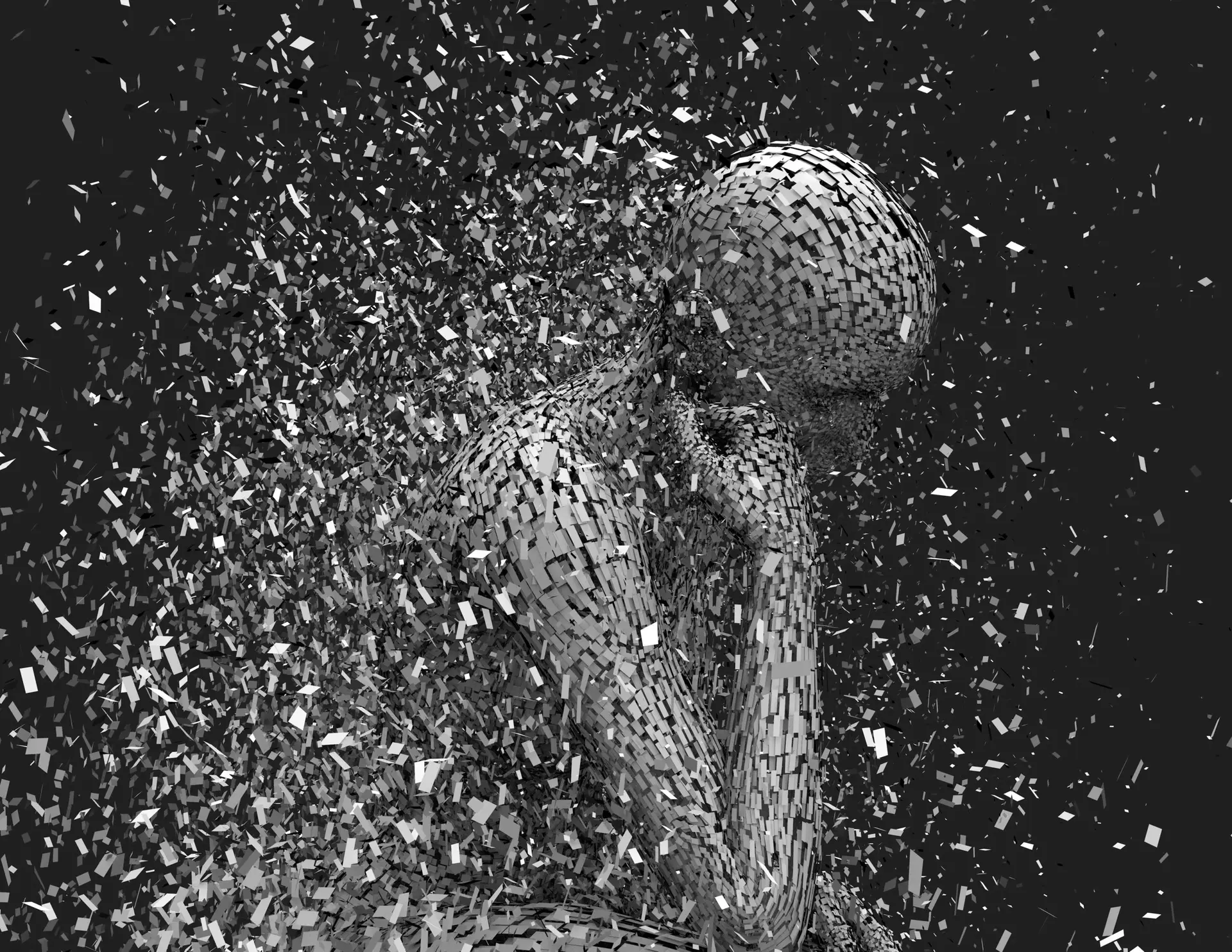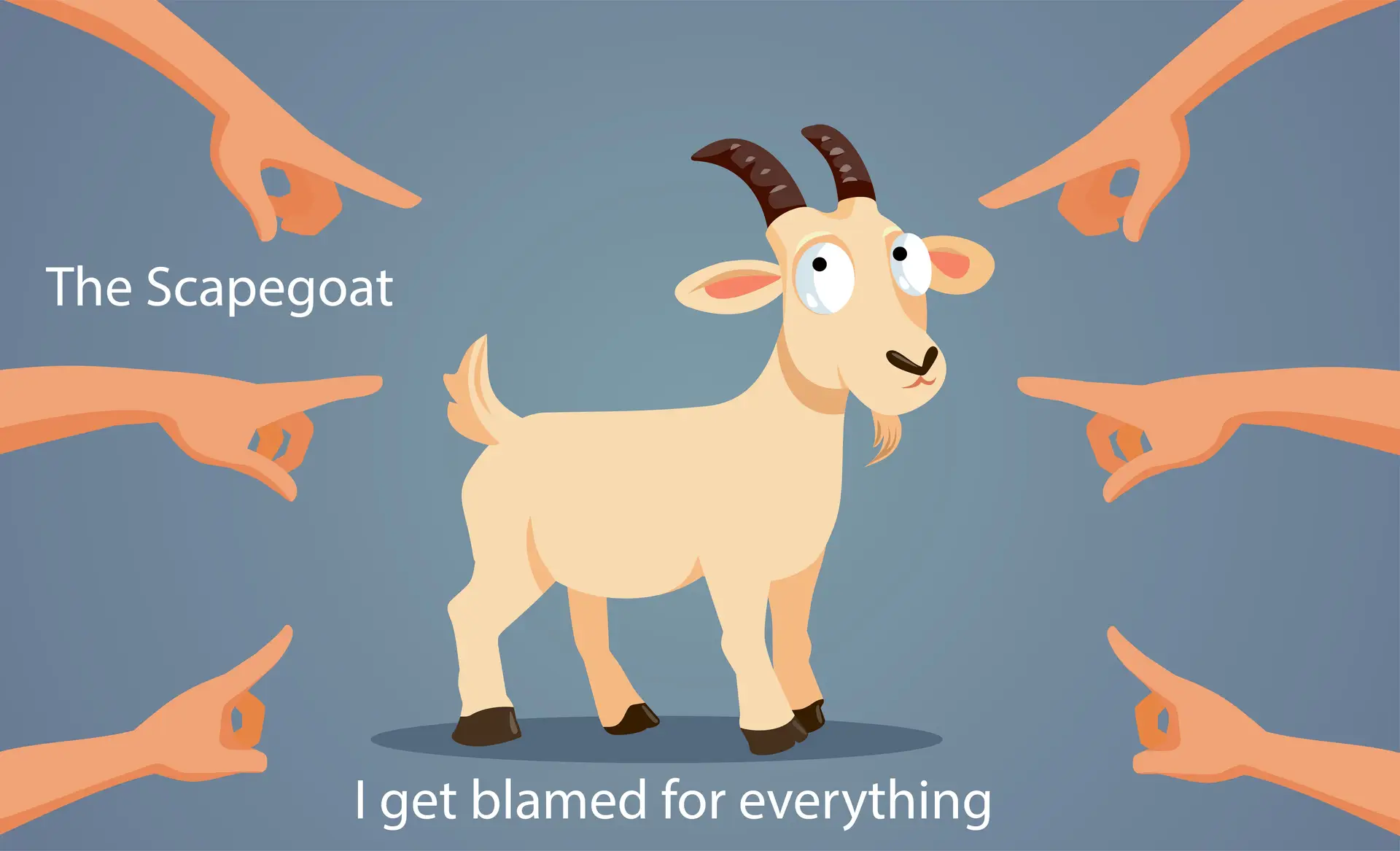Many of us are familiar with the term ‘trauma bond,’ but what does it actually mean? How can we explain the feeling that many people have of being very unhappy in a relationship, feeling at times that they really want to leave it and being determined to do so, but they feel they are somehow stuck, frozen or trapped and they just can’t leave? Even when the relationship gets worse and worse over time, and they end up tolerating situations that they didn’t think they ever would, they still do not leave. Why does this happen?
What Is a Bond?
A bond can be described as:
A close connection joining two or more people.
In chemistry – The force holding atoms together in a molecule.
And also, the ropes or chains that hold prisoners and prevent them moving around or escaping.
What Does a Healthy Bond Look Like?
To understand what a healthy bond looks like, we need to understand the mindset of a person who is able to have healthy relationships, and that is someone who was nurtured in childhood in such a way that they developed:
“A sense of self that is based on one's true inner feelings, preferences, reactions, and capacities. It emerges over time through contact with the environment that allows for its expression. It includes a sense of the ways in which one is unique, and also the ways in which one is the same or differs from others. It is based on reality, and therefore it is relatively resilient and stable, although it evolves in response to experiences.”
Elinor Greenberg PhD
James F. Masterson, M.D., a psychiatrist who specialised in narcissistic and borderline personality disorders, in his book The Search for the Real Self, defines a list of capacities, or mental abilities, that healthy individuals have which enable them to lead a fulfilling life and to have deep, authentic relationships.
To be able to have a healthy relationship, Masterson states that we need to have:
“The capacity to express the real self fully in a close relationship with another person with minimal anxiety about abandonment or engulfment [ability to self-soothe this anxiety]”
James F. Masterson, M.D.
“The ability to be alone. The real self allows us to be alone without feeling abandoned. It enables us to manage ourselves and our feelings on our own through periods when there is no special person in our lives and not confuse this type of aloneness with the psychic aloneness, springing from an impaired real self, that drives us to despair or the pathological need to fill up our lives with..…dead-end relationships just to avoid coming face to face with the impaired real self.”
James F. Masterson, M.D.
We also need to have the “capacity for self-activation and assertion. This capacity includes the ability to identify one's own unique individuality, wishes, dreams, and goals and to be assertive in expressing them autonomously.”
James F. Masterson, M.D.

People who have a strong and stable sense of self are able to have healthy personal relationships based on mutual respect. Both parties can set boundaries which will be honoured and communication is assertive and not aggressive. Emotions can be regulated and there is a recognition and respect for the needs, wants, thoughts and feelings of the other person. Inner feelings can be talked about without the fear of rejection or humiliation. Both parties want the best for themselves and the other person. The relationship is not about power, control, dominance, submission or winning and losing.
What Does an Unhealthy Bond Look Like?
People who are in dysfunctional relationships are going to have an impaired Real Self. This means, for children growing up in narcissistic families, the real self could not develop in a healthy way as the environment (parent/s) did not allow for its expression and nurturing and therefore it is impaired, which means it is diminished, damaged, functioning poorly or weakened. A core belief develops in the person that if someone could see the real me, they will reject me. There can be a lot of shame.
Similar people are attracted to each other and therefore, in a dysfunctional relationship, two people with an impaired sense of self are present and this is the foundation of the trauma bond.
A trauma bond can be defined as an unhealthy attachment between two people in a relationship which one or both people find very difficult to break. They may feel they are happily married for a long period of time and may not be aware that there is an unhealthy bond or the relationship may be volatile or up and down. We can see the negative effects of the trauma bond in a situation where there is perhaps a violent episode or one partner is being unfaithful or there is some other unpleasant incident. The person who has been on the receiving end may feel indignant and determined or desperate to leave and, they either still cannot leave or, they may be able to extricate themselves for a short period of time, but they will go back, often repeatedly. This can feel confusing for the person who wants to leave but can’t.
What Does a Trauma Bond Feel Like?
Dysfunctional relationships can take many forms. Often, but not always, people who have had a narcissistic parent will go on to have dysfunctional relationships in adulthood, often with narcissists. On a superficial level, it is hard to make sense of this. Why would people repeat the pain of their past? We consciously wish for a fulfilling, happy relationship and yet end up with the opposite. Why?
People will often describe someone they have just started a relationship with (and will end up trauma bonded with) as their ‘soul mate’ or ‘perfect.’ In the beginning, both parties often idealise each other and it can be intense, obsessive and move very quickly. The relationship then develops into being unstable, intense, and usually ‘on and off’ again. Alternatively, the relationship can be ‘on and off’ again from the beginning.
A trauma bond can be described as being like glue. It can feel like it is impossible to ‘get away’ even as the bar gets lowered over time as to what is accepted in the relationship.
There are many reasons why people end up trauma bonded in dysfunctional relationships. They are ‘held’ in them for emotional, biological and psychological reasons, the circumstances for which are set up in childhood.

Rats And Bonding Behaviours
Rat pups, like humans, have a biologically predetermined attachment system in the brain. Experiments have been conducted on the pups which shed light on the processes which go on in terms of how mammals attach to abusive parents. In the following experiment, rat pups had stressed mothers and/or learned to associate the smell of their mother with pain (an electric shock). This paper is named Fear in Love: Attachment, Abuse, and the Developing Brain.
“Rats are similar to children in that they have a biologically predetermined attachment system in the brain but must learn to identify and remember the caregiver.
For this reason, we began to use “attachment learning” in rats to question what it is about an infant’s brain that supports attachment, even when the caregiver is abusive. An early clue was the involvement of the brain chemical norepinephrine. The neurotransmitter is released in massive amounts at birth and during bonding with the mother. It is also released when a young animal is in pain. This dual role for norepinephrine set us on the path to explore the fundamental, and puzzling, question of why a child cannot learn to break the attachment to an abusive caregiver. After all, when humans and all other mammals experience pain, they learn to avoid anything that warns of the pain so that they can prevent it next time. So, in an abusive relationship, why doesn’t the pain activate the brain’s fear and avoidance circuits?
Simply and amazingly, the brain area responsible for fear and avoidance learning is not turned on by pain in pups not old enough to leave the nest. Even more amazingly, in older pups that live in the nest but also explore outside the nest, this brain area shuts off only when the pups are with the mother.
The key to the young rat pups’ behaviour is an almond-shaped structure known as the amygdala, a part of the brain involved in emotionally charged memories—especially fearful ones. The presence of the mother during a painful event is enough to suppress activity in the amygdala of a rat pup. The mechanism proved to be surprisingly simple: pups still living in the nest, or older pups in the mother’s presence, did not release the stress hormone corticosterone. The infant amygdala is uniquely dependent upon increases in corticosterone to learn and express fear. In a later study, we showed that the neurotransmitter dopamine is also released when the rat is learning to avoid the odour. Though dopamine is often considered a “reward” chemical, when increased in the amygdala it helps to form fear-related memories. In this study, young rats still in the mother’s nest showed a large decrease in dopamine in the amygdala, indicating a mechanism to further block pups from learning to fear.
The benefits of this maternal off switch seem obvious. Nearness to the mother offers comfort and courage in what might otherwise be a frightening situation, serving to strengthen the bond between mother and infant, and to remind an older child where its haven is in times of danger. This phenomenon is known as “social buffering,” and it continues throughout life. When a child gets an injection, the presence of a parent can help the child cope with the pain. Later on, when someone we care about is there to comfort us in a stressful situation, our stress hormones and fear are greatly reduced.
The switch is flipped, however, when the intrepid older rat pup is out exploring. Then, the threatening event sparks the fear response, propelling the youngster away from danger and, preferably, back into the nest while searing an indelible memory into the brain.
But when the parent and the nest are themselves sources of danger, the suppression of fear circuits in the amygdala unfortunately still works. The fear, avoidance, and even memories associated with pain are extinguished—explaining why an abused child, even while trying to escape pain, will later seek contact with the abuser.
Traumatic experiences such as abuse can work their way into a child’s genes. This fact may come as a surprise since most of us think of genes as something we are born with. Of course, the genetic material we receive from our parents is important and lays the foundation for who we are and what we become. But how our parents treat us as we grow can greatly influence the way the genetic material is “read” and used. Think of our genetic material as a vast library of information. The way this information is accessed, and what ends up being done with it, depend in great part on our early-life experiences.
The influence of outside-world factors on our genes is known as epigenetics. An epigenetic change occurs during the biochemical process of turning a gene’s code into whatever protein that gene codes for—in scientific parlance, the process of gene expression. The concept of epigenetics helps explain why so many effects of child abuse do not become apparent until adolescence or adulthood. It may also hint at why abused children often grow into abusers themselves.
It may seem obvious that a mother’s handling of her child will influence the way that child treats her own children. The transmission of this trait from mother to daughter and beyond may result from epigenetic alterations to genes involving oestrogen sensitivity, according to research from Frances Champagne of Columbia University and Michael Meaney of McGill University. These researchers showed that the amount of care a new born female rat receives in the form of licking and grooming will determine how much licking and grooming she will do for her own pups—and they for theirs. In 2006 this team found that a mother’s licking and grooming activity can modify the expression of a gene involved in several aspects of reproduction, resulting in differing levels of a particular oestrogen receptor in adulthood.
Consequently, a rat’s sensitivity to her own oestrogen levels can change, leading to changes in the way a mother handles her pups for at least two generations. Animal studies show that epigenetic changes also occur in abusive situations. Tania Roth, David Sweat, and colleagues at the University of Alabama, Birmingham, found that when rat pups were raised by stressed mothers who behaved abusively, the pups—and their pups—showed changes in the gene producing a substance known as brain-derived neurotrophic factor (BDNF). The job of growth factors is to nourish and protect brain cells; BDNF in particular helps to stimulate the birth of new neurons (a process known as neurogenesis). The gene alterations in the abused pups showed up in the hippocampus and the prefrontal cortex. Since BDNF and neurogenesis in the hippocampus help to support learning and memory, and both help ward off stress and depression, this animal finding points to one route through which abused children can suffer from emotional and cognitive problems throughout life.
Some recent research hints at epigenetic changes in people who were abused as children. In 2009, Meaney and colleagues examined brain tissue obtained post mortem from a group of suicide victims, some of whom had been abused early in life and some of whom had not. The brains of the abuse victims showed several differences. In the hippocampus, receptors for the stress hormones known as glucocorticoids were fewer in number, and the genes encoding the receptors had alterations in the “promoter” region, where the process of gene expression begins. In a healthy brain, glucocorticoid receptors are plentiful in the hippocampus, where they play several roles in memory, emotion, and the stress response—including helping to consolidate fear-related memories. Some conditions, like major depression and post-traumatic stress disorder, involve a loss of the neurons containing these receptors; both conditions can involve memory loss as well. This pattern of epigenetic change did not show up in the brains of suicide victims who were not abused, or in control subjects who had died of natural causes. The differences imply that the abuse caused the changes in the hippocampus—not that people who commit suicide have an underlying brain anomaly making them more likely to take their lives.”Regina Sullivan, Ph.D. and Elizabeth Norton Lasley
Clinging Behaviours - The Trauma Bond
Masterson writes extensively about the clinging behaviours, in childhood and adulthood, of people who come from narcissistic families (there will also be rebellious and distancing behaviours present at times).
For many people clinging and dependent behaviours feel ‘good’ as does meeting other people’s needs and being independent and autonomous feels ‘bad.’

“Even as adults, people with a deflated false self will feel as they did when children: bad, guilty, ugly, helpless, inadequate, and empty for never asserting themselves; and they will only feel good and actually “loved” when they are passive, compliant, and submissive to the person to whom they cling for emotional supplies….caught in this….their emotional lives are characterised by chronic anger, frustration and feelings of being thwarted. The abandonment depression continually lurks around the corner and the false self prevents the person from turning that corner.”
James F. Masterson, M.D.
n.b., Masterson speaks of a deflated false self here. This is related to people with a more co-dependent psychological make-up. When he addresses people with narcissistic personality disorder he describes them as people with an inflated false self. The false self can also be described as an adapted self. It can be defined as:
“….a constructed sense of identity that is now misidentified as the person’s real self. It is based on fantasy and input from others (especially early caregivers) and is designed to defend against unpleasant feelings and please other people. However, because it is not inherently and deeply true, it is vulnerable to outside influences and is easily disturbed.” Elinor Greenberg PhD
The Abandonment Depression
The ‘abandonment depression’ is Masterson’s term for the overwhelmingly unpleasant feelings that surface when a person with an impaired real self tries to self-activate (express their own wants and needs) and this can trigger a suicidal depression, rage, guilt, panic, emptiness, helplessness and hopelessness. These emotions will then guide people back into their defences i.e., people pleasing and serving the needs of others.
The Fear Of Abandonment
The fear of abandonment is a strong force in keeping people in dysfunctional relationships. It is a deep-seated fear of being left by people that you are close to. This fear affects your thoughts and behaviours. It is related to the avoidance of feeling the abandonment depression.
In an effort to keep their partner, people with a fear of abandonment may feel that they have to give more than they ‘take’ from others, they may be chronic people pleasers which can lead to an imbalance of power in relationships. Alternatively, they may try to control their partners through wanting to know where they are, most or all of the time, or they may use threats. They may be envious of other people’s relationships. They may feel anxious and worried a lot of the time and may need frequent reassurance that their partner is being faithful or will not leave them. They may feel very jealous. They may sometimes have clinging behaviours and at other times push their partner away.
Adults who are afraid of being abandoned may be preoccupied with working hard to keep their partner from leaving and put a lot of effort into the relationship. They may then worry that their partner does not appreciate or reciprocate their efforts.
Guilt and Clinging
Many children of narcissists will be very familiar with the strong feelings of guilt that can come along in every day life when they do things for themselves. Others avoid the guilty feelings by spending a majority of their time in service to others, keeping very busy or working.

“Guilt is the ‘fifth column’ (of 6 – the others being Depression, Panic, Rage, Helplessness and Emptiness) behind the patient’s front line of defences. The…Guilt is not the ‘reasonable’ guilt that a person feels when he genuinely does something that he believes is wrong – guilt that is appropriate for an injury or harm caused to another.
Appropriate guilt for the right reasons and in the right degree oils the wheels of society and keeps us civilised.
(This)…guilt is another matter. It is fed by the guilt we internalise in early childhood from the disapproval expressed by the mother for self-actualisation or individuation (terms for discovering, asserting and becoming our unique selves). It is then reinforced later in childhood and in adolescence.
Even after striking out on our own, a strong reprimanding voice, fixed in the psyche, reminiscent of parents, teachers and authority figures from the past can echo down the corridors of time in our daily lives when we entertain those special thoughts and wishes we know would, in the past, elicit disapproval.
The real self’s genuine urges, however- starting a new career, beginning a relationship with someone, moving out of town, spending an evening away from the family, spending a little extra money on a new hobby or pastime – should not produce guilt feelings.
When the false self is solidly in control, those harmless, natural desires for self-expression can trigger the voice of warning, the rebukes, the disapproval we have kept locked in our psyches over the years.
In people who have a strong sense of their real selves, such undertakings do not provoke guilt…. for people with an impaired real self, however, the guilt produced by this warning can be as paralysing as it was when they were five years old. They feel guilty about that part of themselves that wants to individuate….. not able to face the internalised guilt trip, these individuals will suppress any moves in the forbidden direction and resort to the old familiar clinging behaviour that they remember made them feel safe and good years ago.
In some cases, especially among adolescents and young adults, clinging behaviour may be directed to the actual mother….in other cases, the clinging may be to another person who represents security and approval. In effect, we expect someone to take care of us like a parent whether that person wants to or not.
In either case, the false self argues convincingly that clinging is the only reliable strategy to avoid feeling guilty. Helplessness springs from the persons inability to activate his impaired real self to deal with these painful feelings.James F. Masterson M.D.
For those with some borderline traits or borderline personality disorder (common in those from a narcissistic family):
“the developmental arrests of the real self and ego functions” (ability to tolerate frustration and have self-control) mean that “the child continues to rely heavily upon primitive mechanisms of defence: denial and clinging, avoidance and distancing, projection, and acting out. In order to prevent abandonment feelings, the child denies the reality of separation. Although physically, he is a separate, autonomous self, he doesn’t feel, think, or act that way…. Denial and clinging become reflexive responses, fixed in the child’s personality, later to become the primary means of dealing with similar separation stresses in adulthood….
To further assure himself he will not trigger the abandonment depression, the child learns to avoid opportunities to express himself, or assert his wishes, or activate what is most unique in his personality, all of which could threaten his emotional equilibrium by precipitating his feelings of abandonment….He learns that for him life is more tolerable when he holds himself back and avoids situations that would stimulate his own growth through self-activation and self-expression. Relinquishing control seems a small price to pay in order to feel safe… in relationships, the person will either cling or stay aloof and emotionally uninvolved out of fear of being hurt or rejected.”
Acting out is involved here (which is performing an extreme behaviour in order to express thoughts or feelings the person feels incapable of otherwise expressing). The behaviours will usually be considered bad or antisocial and are generally destructive to either the self or to others. Feelings are translated into actions rather than being felt. It is an unconscious process.
“Typically, the individual, due to his hypersensitivity to rejection, will avoid facing up to and dealing with the abandonment depression by playing out the painful parental relationship with another person cast as the parent…in this way it is dealt with as an external problem in the present. The illusion is created that the person is ‘managing it’ in the here and now. Acting out can also take the form of self-destructive behaviour such as drinking alcohol, taking drugs and working excessively, these serve as a distraction from the abandonment depression… in addition, people seek pleasure to avoid the pain of the abandonment depression and a superficial ‘feeling good’ means not feeling that.” James F. Masterson M.D.
So, being in a dysfunctional relationship with a narcissist can help us to stay in a place where we don’t ‘self-activate,’ which is, to connect with our authentic self and express and achieve our wants and needs.
A cycle happens where a person wants to self-activate, they then feel the ‘abandonment depression’ and move back into a defence strategy. This can continue for years.
Self-activation triggers Abandonment Depression triggers Defence
I can't let go

The denial and clinging Masterson is writing about is the trauma bond which can be likened to a person clinging to a rock in the ocean. Without the rock, we fear we will drown as we cannot make it in life without that rock to hold onto. This feeling is the driver that keeps us in dysfunctional relationships even as they deteriorate over time.
Some people go from relationship to relationship without spending time alone between each one. Some people have multiple relationships at once and others have a long term relationship lasting many years.
Trauma Bonded Yet Independent
It is important to note that our personal experiences and personalities are individual and for some, even though they are trauma bonded, they may still be very independent and very capable.
We all have different levels of functioning and we are all individuals.
Reading about attachment theory and dissociation can help us to understand the concept of different ‘parts’ of us which are our different coping mechanisms. This helps to explain how our characters can seem to be so contradictory at times.
Conclusion
The reasons for the inability to escape the trauma bond become clearer when we understand the dynamics of our relationships with others which were shaped in childhood. Along with the effects on brain development and the nervous system, there is the long-term rewarding over many years in childhood for clinging, passive and dependent behaviours, and punishment for assertive, independent behaviours. There is the fear of abandonment and the abandonment depression, the living in an adapted self and not knowing who our real self truly is. There are the overwhelmingly strong feelings of guilt that come in which clinging to another person keeps at bay.
Being in a dysfunctional relationship can help us to stay in a place where we don’t ‘self-activate,’ which is, to connect with our authentic self and if we do self-activate it triggers the feelings of despair, helplessness, emptiness, guilt and hopelessness of the abandonment depression which in turn triggers us to go back into defence (defence mechanisms such as people pleasing etc).
We may also have other core beliefs which keep us there such as; no one else would have me, if I leave I will be alone forever, and if there are children, I don’t want my children to come from a broken home.
These are the reasons we end up trauma bonded in dysfunctional relationships.
How Do We Move Towards Having Healthy Relationships?
To move to a place where we can have healthier relationships, we need to change our relationship with ourselves. The relationships we have in our lives reflect our inner world and the way we feel about ourselves. When we don’t like ourselves and we feel a lot of guilt, shame and a lack of self-worth, this will be reflected in our choice of partner and our expectations of how we think we deserve to be treated will be low.
We can get to a healthier place by becoming more self-aware and recognising patterns in our behaviour which do not serve us well. Please see article here on recovering from abuse.
Therapy can help with a qualified therapist who understands trauma.
Children of Narcissists on YouTube
If you prefer audio – I read through some of these articles on my YouTube channel.
There are also a few videos which are not based on articles.
Sources:
Books
Elinor Greenberg PhD., Borderline, Narcissistic, and Schizoid Adaptations: The Pursuit of Love, Admiration, and Safety.
James F. Masterson M.D., The Search for The Real Self
Kathy Steel, Suzzette Boon, Onno van der Hart, Coping with Trauma-related Dissociation
Online
Regina Sullivan, Ph.D. and Elizabeth Norton Lasley
Fear in Love: Attachment, Abuse, and the Developing Brain
https://www.ncbi.nlm.nih.gov/pmc/articles/PMC3574772/
Definition of Bond







